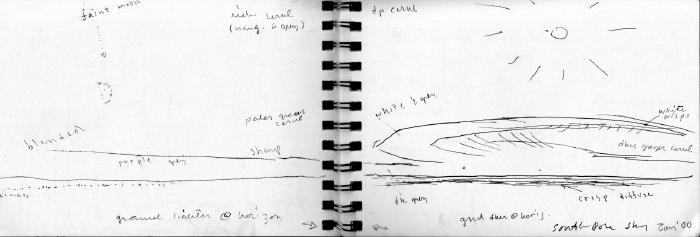Questions to Ask
Next: Daily Memory Drawings
Prev: Macro-writing Macros
Questions to Ask
… of a painting in progress, with strategies for recovery.

I’ve been learning a lot lately by studying books, blogs, and doing studies from life. It’s made me reflect upon my past strategies (or lack thereof) for making artworks.
These are roughly in order of importance, in that if the answer to a previous question is, “no,” it’s probably not worth spending too much time on the current question.
Is the concept, content or intent clear in your mind, and is it what you want?
If not, go back to the drawing board:
- make studies from life;
- generate ideas in sketchbooks;
- look to other artists’ work for inspiration;
- look to previous successes and failures to see what the next step is.
- Consider destruction, deferral, or radical transformation of the current piece.
Does the overall design make sense?
- Large Shapes and Edges
- Composition
- Perspective
- Arrangement of objects in the illusionistic space of the piece
If not, fix at the level of drawing (shapes/outlines/values). Also ask, Is there anything that could be removed to make the work stronger?
Do the values communicate the right forms well?
If not, fix at the level of drawing (values). Check:
- Light sources and the nature of any reflections (specular vs. diffuse)
- Accuracy / illusion of form
- Level of detail
Do the colors work in harmony with each other and with the other concerns in the painting?
If not, repaint one or more areas, maintaining value but shifting hue.
Do the marks and surface quality relate to the intent/energy/mood? Are they interesting?
No matter how “objective” the intent, at some level all paintings and drawings are abstract. They should be beautiful at any distance or level of “magnification.”
If not, re-work those areas, using strategies of sanding, scraping, erasure, or starting over.